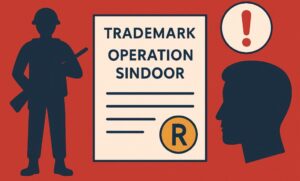For many businesses, patent protection may be a crucial technology investment and a useful commercial tool. Every organisation may have a significant technology or invention that is worth safeguarding because it could turn out to be a priceless asset.
The fact that patent rights are territorial is significant in terms of patents. If you patent your business in India, for instance, it will only be applicable there. Apart from India, you will need to file separate patent applications in each nation where you need patent protection in order to obtain it.
Table of Contents
ToggleWhy you should file a patent in India?
Here are the top considerations for why you should file a patent in India and why patent protection is essential.
1. Patents Establishes Exclusive Rights
A patent gives its owner the only authority to stop anyone from using their original concept or the goodwill they have built up for their goods and services by producing, importing, offering for sale, selling, or using the patented invention.
2. Patent Provides Competitive Advantage
By discouraging unlawful usage and stopping them from replicating the invention or doing something that competes with the business’s intellectual assets, protecting patent assets and rights may provide a company the competitive edge over rivals. This would lower the danger of patent infringement by eliminating or lessening imitational competition or preventing competitors from copying the inventions. As a patent holder, it may assist the owner in gaining market dominance in a certain area that is essential to the technological sector. Patents prevent competitors from harming the owner’s success.
3. Increase Profit or Returns
The owner of a patent has the opportunity to make money from the invention’s commercial exploitation. Patent holders will be able to increase their market dominance and be the ones profiting from the invention because they will have the sole right to create, import, sell, and use the invention. A patent can help an innovation be sold at a higher price by providing buyers with a new method of accomplishing something or something novel and distinctive. Since the rivals aren’t allowed to provide a similar product, returns and sales would normally increase.
4. Additional Revenue Stream from Licensing
By granting the right to use or manufacture the patented ideas in exchange for royalties or other compensation, patent owners can licence their patents to businesses. In such a licencing, the patent holder will continue to be the licensee, and throughout the period of the contract, royalties will be paid at a predetermined rate by the licensee. A proportion of sales from the goods and/or processes covered by the patent under licence may be used as the royalty or licence fee. This payment may be made once or on an ongoing basis. The patent owners may receive a steady stream of income in the future as a result. While the invention is being licenced, the patent holder may still be able to utilise or manufacture it.
5. Technology Transfer
Owners of patents may sell their patented inventions and receive a one-time transfer fee in exchange, or they may assign their patent rights to other businesses. In this case, the patent will no longer belong to its original owner.
6. New Technology Access Through Cross-Licensing
The owner of a patent portfolio frequently possesses a technology that is commercially desired by others, who may in turn own a patent portfolio for a different technology that the first patent owner finds interesting. This additional party might be a client or a rival. In this case, the patent owners may agree to a cross-licensing agreement in which both parties agree to exchange access to each other’s patent portfolios in exchange for permission to use each other’s inventions in accordance with the agreement’s terms.
7. New Markets Exposure
A patent may also be useful commercially for opening doors to new markets via partnerships, joint ventures, and mergers. Patent portfolios may enhance a business’ reputation for innovation. A patent can open the door to new markets and commercial partners, which can be helpful for start-ups and investors alike.
8. Increase Valuation
By allowing the patent holder to regulate access to the technology in the market, patent protection may help to develop and maintain the entry barriers to competition that may raise the value of the technology in the market or improve the commercial value of the product. In investment talks, patent protection can also be used to raise and improve a company’s value. Additionally, patents invariably increase the value of the company when the owner sells it.
9. Attract Investment
When assessing a business prospect, investors may view an issued patent as a proof of concept for advanced technological capability. Potential investors want to feel secure in their investments because they recognize the value of a patent as an intangible asset.
Click the below link to file a patent in India with best patent filing services in Bangalore, India.






